Are you ready to garden yet? I am. I have a treat for you today if you love heirloom gardens and gardening. I am reviewing Heritage Gardens and Heirloom Seeds: Melded Cultures with a Pennsylvania German Accent.
Never before has there been a book to include a complete background on heritage or traditional gardening and heirloom seeds. At over 270 pages the book is loaded with pictures of plants and gardens of America from their very beginnings. The book is divided into five sections. In this order:
I. Which Came First, the Garden or the Seed?
II. The Heritage Garden
III. Visiting Gardens, Garden Sites, and Heritage Landscapes
IV. Heirloom Seeds
V. The Galleries (pictures)
I. Which Came First, the Garden or the Seed?
II. The Heritage Garden
III. Visiting Gardens, Garden Sites, and Heritage Landscapes
IV. Heirloom Seeds
V. The Galleries (pictures)
Costumed interpreters cultivate and harvest crops. (pg.79)
In the first section the book begins with the discussion of the locally sourced foodstuff movement that has grown in America and the importance that has generated in the restaurant industry and communities alike. The importance of heirloom varieties is that they were developed before modern agriculture became chemically drenched and genetically modified. This makes the heirloom seeds significantly valuable because they are being preserved from extinction and many of them are without compare in modern agriculture. The gastronomic virtues of flavor and taste not mention the preservation of the historically correct seed is of paramount importance.
(pg. 81)
The second section of the book is "The Heritage Garden," of which the authors explore the history of the gardening tradition in North America. The history begins with the Native American contribution to our harvest table, the Spanish influences, Anglo-Dutch traditions, French, and the Pennsylvania German Garden. The most significant being the Pennsylvania German because these heritage garden forms lasted the longest among the Pennsylvania Germans. The authors truly take you back to the origin of this gardening from sharing the emigrants opening their traveling chests and pulling out seeds and cuttings that originated from kitchen and medicinal gardens of Benedictine cloisters in Switzerland and Germany. (pg.45) They share the structure of these gardens including the dimensions, composition (including the four square garden), how they gardens were uniquely watered, and the tools with which they kept them. They explain what was grown in these gardens and how, the folklore about planting, and when to plant. Included are real historical letters with vivid descriptions of the gardens. (pg. 70)
(pg.83)
This history of gardening also can't be mentioned without including religion and beliefs pertaining to the garden by the gardeners. The Quaker beliefs were that the earth was a gift from God to man. Man had the responsibility of cultivating the earth for his own benefit and celebration of God's goodness. (pg. 71) None of this went unnoticed by celebrities that were ahead of their time. Pictured above (pg. 83) is Julia Child visiting the Landis Valley Museum. This museum has been a pioneer on the revival of the traditional Pennsylvania German garden and it is home to the Heirloom Seed Project. (pg. 73)
(pg. 95)
Here is an example of runway or ribbon gardening by the Amish and Mennonite in Lancaster county Pennsylvania. The one on the top right could have been my Great-Grandfather's garden from the Kentucky tobacco farm I grew up around as a child.
from: gallery of heirloom vegetable varieties (pg. 243)
The next chapter of the book describes the genesis of the seed industry and how it shifted from growing fields to the laboratory. Much is discussed about the history of the seed packets in America and the seed houses that produced them and how each year fewer and fewer varieties of these seeds are on the market. The Seed Savers Exchange founding and work is discussed and how that morphed into the Landis Valley Farm's Heirloom Seed Project.
Also included is complete instruction on how to harvest seeds and save different varieties. Pictured here is a year's harvest of seeds stored tightly in glass jars and covered by a drape to protect them from light. (pg. 208)
from: the galleries of heirloom vegetables and flowers (pg.261)
Then the book describes the Heirloom Seed Project's many popular varieties of seeds and plants not excluding some of my favorite herbs and flowers!
It just so happens, I am a Seed Savers Exchange customer and I have three plants here that I have started from seed this very year! I thought I would share them here with my book review.
This is one of these two varieties of tomato I have shown here. It is either the Hungarian Heart tomato or the Austin's Red Pear. I will figure it out when it fruits. I first got interested in the heirloom vegetables while reading Eating on the Wild Side: The Missing Link to Optimum Health by Jo Robinson. Having a background as a RN, I have always been studying the proper way to eat for health and it turns out that there is a dramatic difference in the plant varieties we cultivated in the past from the ones on our grocery store shelves today and that difference is the nutrition is bred out of our modern produce. In this book "Eating on the Wild Side," Jo Robinson mentions eating specific varieties of produce that have the most nutrition and that is how I came to order these seeds for my tomatoes. They have the most nutrition packed into a tomato you can get! So, that began my adventure into heirloom gardening.
I highly recommend this book if you or a gardening friend have a love of heritage gardens or heirloom seeds and plants. It is a valuable resource and a wonderful testimony to why we need to preserve our heirloom seeds and plants. The diversity offered in nature is there for a reason and to hybridize it out of all food and plant life is a big mistake. The wisdom in the natural order of plant life is a valuable commodity worth studying and preserving. I also recommend the book as an excellent reference book on heritage gardens and heirloom seeds and plants. I really enjoyed this book and I will keep it for a reference for my heirloom gardening. I have really enjoyed reading the history of gardening in America and the historical letters about gardening in this book. The history and folklore surrounding the emigrants gardening has been woven into the fabric of our farming communities and it is wonderful to see it documented in this book.
Thank you to Elizabeth at Schiffer Publishing, Ltd. for providing me with a copy of this book for review. The review and opinions were entirely my own.
I highly recommend this book if you or a gardening friend have a love of heritage gardens or heirloom seeds and plants. It is a valuable resource and a wonderful testimony to why we need to preserve our heirloom seeds and plants. The diversity offered in nature is there for a reason and to hybridize it out of all food and plant life is a big mistake. The wisdom in the natural order of plant life is a valuable commodity worth studying and preserving. I also recommend the book as an excellent reference book on heritage gardens and heirloom seeds and plants. I really enjoyed this book and I will keep it for a reference for my heirloom gardening. I have really enjoyed reading the history of gardening in America and the historical letters about gardening in this book. The history and folklore surrounding the emigrants gardening has been woven into the fabric of our farming communities and it is wonderful to see it documented in this book.
Thank you to Elizabeth at Schiffer Publishing, Ltd. for providing me with a copy of this book for review. The review and opinions were entirely my own.
Sherry

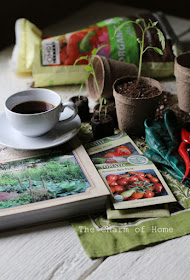
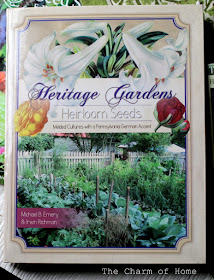
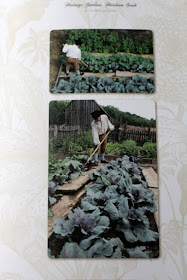
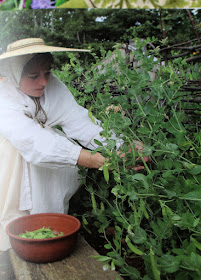

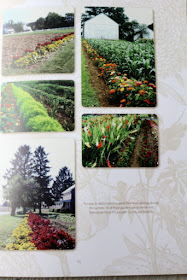

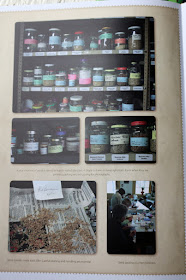
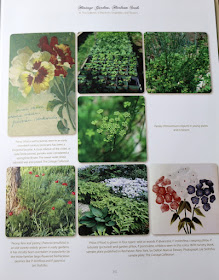
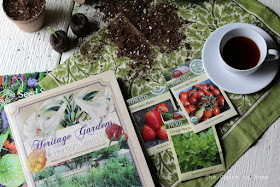
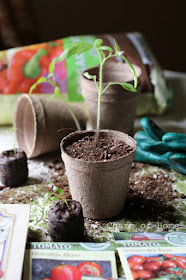
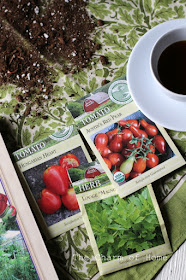
Interesting! This is the first time I've heard of heirloom gardening.
ReplyDeleteI love your posting Sherry! You know this is a great way to have very cheap plants and something I plan to do more in the days ahead. Since I just moved and am still unpacking - maybe not as much this year but did you see Mountain Mama's post? She is going to town on plants with snow on the ground! Thanks for sharing your information and this book!
ReplyDeleteBonjour,
ReplyDeleteComment ne pas avoir envie de jardiner lorsqu'on pénètre dans votre univers où les photos sont aussi aguicheuses ?!!
Merci pour cette belle publication.
Gros bisous ❀
What a stunning post and what an interesting book, dear Sherry !
ReplyDeleteI'm so in love with it, you know my love for History and for gardening, as well, that's why I've already added it at my wish list, thank you for your so lovely review, my beautiful friend !
Hope your week is off to a great start, I wish you most wonderful days to come,
sending love to you
Dany
I'm sure all gardeners would enjoy this book. It's pretty cold here yet. Happy planting, Sherry, and thanks for sharing.
ReplyDeleteBlessings,
Sandi
Wow, this book looks incredible - thanks for sharing!! And to answer your question about my grow light - this is the one I'm using - so far, it's working great!! Thanks for visiting my blog - I look forward to checking out more of your posts!!
ReplyDeletehttp://www.amazon.com/Start-JSV4-4-Foot-Light-System/dp/B0001XLSGQ?ie=UTF8&psc=1&redirect=true&ref_=oh_aui_search_detailpage
So serious. .I'm so ready to dig I can't wait
ReplyDeleteYes I am ready and we have started. I buy my seeds from Park Seed company and have done it for years. My Daughter has started to buy the heirloom seeds and she has a beautiful garden too.
ReplyDeleteI love to garden, but I have no idea what I am doing. I think maybe I need to read this book.
ReplyDeleteThanks for sharing with SYC.
This is really interesting to me. I've only recently started reading about the differences in food quality and the organic side of food. I guess when we start modifying foods to make them produce more they lose other good qualities. So glad you shared this with Thoughts of Home. I'm pinning to TOHOT and my gardening board.
ReplyDeleteI am a gardener as well so this post truly speaks to me.
ReplyDeleteI grow organically and heirloom quality from seeds only.
We are just beginning the first harvest of our radishes and it is a thrilling time for us.
Thank you for sharing this with us at TOHOT.
Jemma
Dear Sherry:
ReplyDeleteCongratulations on being one of the special featured blogs today from the Monday party! Thanks for participating and have a great weekend.
I love seed exchanges. This book looks wonderful. And yes as a Quaker myself, the earth is a gift from God.
ReplyDeleteWhat a lovely book, Sherry! So much interesting background information. I'm envious that you already have some seedlings started. Mine seemed to fall by the wayside this year...good luck with your tomatoes! (I love them, as does my whole family.) We'll be planting tomatoes, onions, potatoes and lots of peppers. Thanks for sharing at Vintage Charm. xo Kathleen Charm Bracelet Diva {At Home}
ReplyDelete